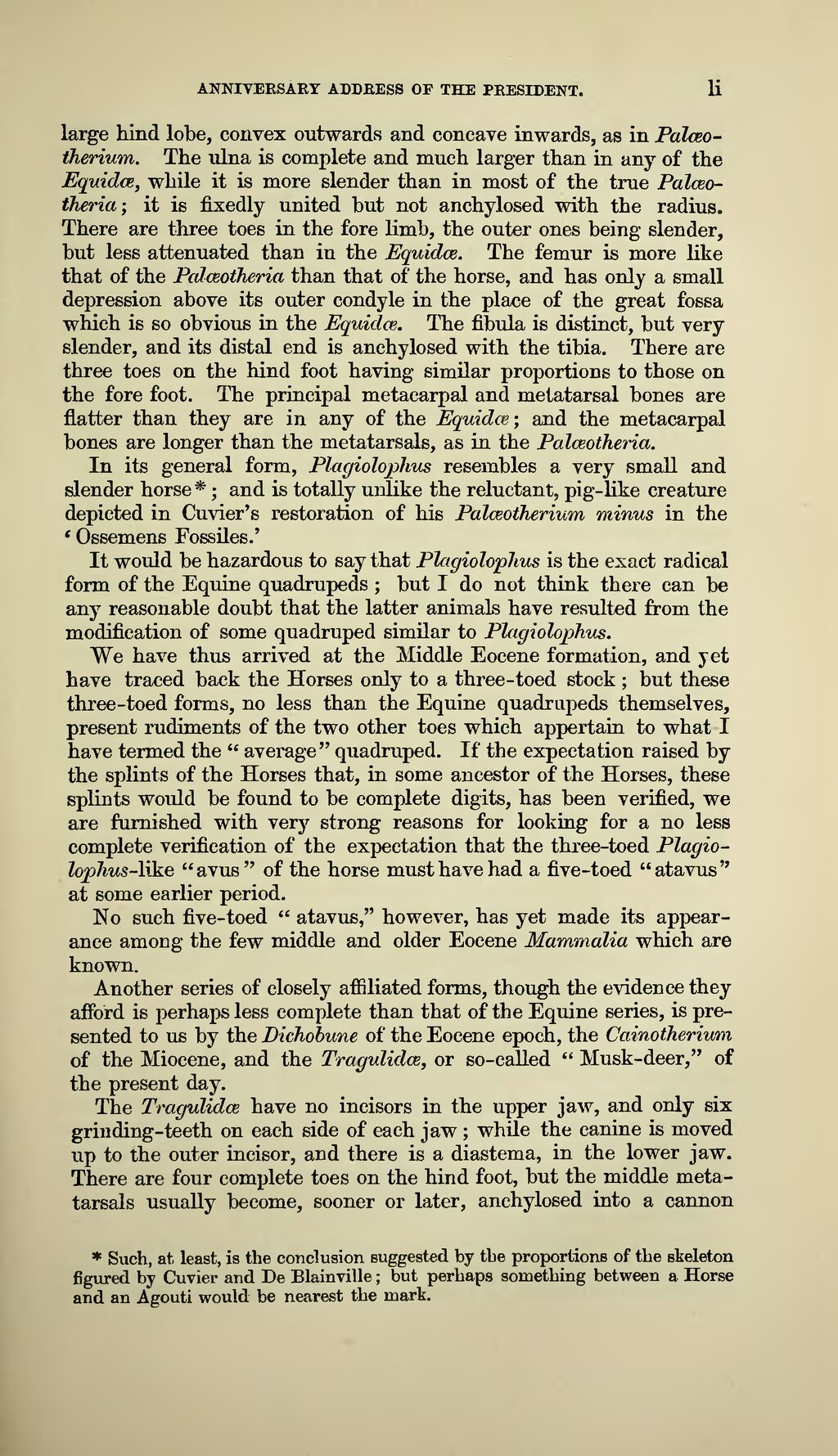large hind lobe, convex outwards and concave inwards, as in Palæotherium. The ulna is complete and much larger than in any of the Equidæ, while it is more slender than in most of the true Palæotheria; it is fixedly united but not anchylosed with the radius. There are three toes in the fore limb, the outer ones being slender, but less attenuated than in the Equidæ. The femur is more like that of the Palæoiheria than that of the horse, and has only a small depression above its outer condyle in the place of the great fossa which is so obvious in the Equidæ. The fibula is distinct, but very slender, and its distal end is anchylosed with the tibia. There are three toes on the hind foot having similar proportions to those on the fore foot. The principal metacarpal and metatarsal bones are flatter than they are in any of the Equidæ; and the metacarpal bones are longer than the metatarsals, as in the Palæotheria.
In its general form, Plagiolophus resembles a very small and slender horse[1]; and is totally unlike the reluctant, pig-like creature depicted in Cuvier's restoration of his Palæotherium minus in the 'Ossemens Fossiles.'
It would be hazardous to say that Plagiolophus is the exact radical form of the Equine quadrupeds; but I do not think there can be any reasonable doubt that the latter animals have resulted from the modification of some quadruped similar to Plagiolophus.
We have thus arrived at the Middle Eocene formation, and yet have traced back the Horses only to a three-toed stock; but these three-toed forms, no less than the Equine quadrupeds themselves, present rudiments of the two other toes which appertain to what I have termed the "average" quadruped. If the expectation raised by the splints of the Horses that, in some ancestor of the Horses, these splints would be found to be complete digits, has been verified, we are furnished with very strong reasons for looking for a no less complete verification of the expectation that the three-toed Plagiolophus-like "avus" of the horse must have had a five-toed "atavus" at some earlier period.
No such five-toed "atavus," however, has yet made its appearance among the few middle and older Eocene Mammalia which are known.
Another series of closely affiliated forms, though the evidence they afford is perhaps less complete than that of the Equine series, is presented to us by the Dichobune of the Eocene epoch, the Cainotherium of the Miocene, and the Tragulidæ, or so-called "Musk-deer," of the present day.
The Tragulidæ have no incisors in the upper jaw, and only six grinding-teeth on each side of each jaw; while the canine is moved up to the outer incisor, and there is a diastema, in the lower jaw. There are four complete toes on the hind foot, but the middle metatarsals usually become, sooner or later, anchylosed into a cannon
- ↑ Such, at least, is the conclusion suggested by the proportions of the skeleton figured by Cuvier and De Blainville; but perhaps something between a Horse and an Agouti would be nearest the mark.
